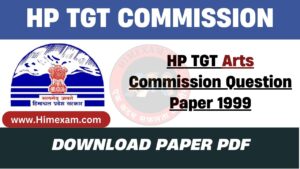Computer Questions Answers for Competitive Exams Set-21
||Computer Questions and Answers for Competitive Exams Set-21||Computer Questions Answers for JOA IT,Computer operator & other exams||important computer related question answer||
1. The period of the Second Generation Computers was
(A) 1946 – 1958
(B) 1940 – 1960
(C) 1959 – 1964
(D) 1965 – 1975
Explanation:-The period 1953-1964 is generally taken to be the period of second generation computers. Sometimes, 1946-1958 is supposed to be the period of first generation computers. By 1948, the invention of the transistor greatly changed the computer’s development. The transistor replaced the large, cumbersome vacuum tube in televisions, radios and computers. As a result, the size of electronic machinery has been shrinking ever since. From 1955 onwards transistors replaced vacuum tubes in computer designs, giving rise to the “second generation” of computers. A second generation computer, the IBM 1401, captured about one third of the world market. IBM installed more than ten thousand 1401s between 1960 and 1964
2. LAN stands for
(A) Land Area Network
(B) Local Area Network
(C) Local Access Network
(D) Local Area Netware
Explanation:-A local area network (LAN) is a computer network that interconnects computers in a limited area such as a home, school, computer laboratory, or office building using network media. The defining characteristics of LANs, in contrast to wide area networks (WANs), include their usually higher data-transfer rates, smaller geographic area, and lack of a need for leased telecommunication lines.
3. Correct expansion of the term ‘http’ in Internet address is
(A) higher text transfer protocol
(B) higher transfer text protocol
(C) hybrid text transfer protocol
(D) hypertext transfer protocol
Explanation:-The Hypertext Transfer Protocol (HTTP) is an application protocol for distributed, collaborative, hypermedia information systems. HTTP is the foundation of data communication for the World Wide Web. HTTP is the protocol to exchange or transfer hypertext.
4. The term PC means
(A) Private Computer
(B) Personal Computer
(C) Professional Computer
(D) Personal Calculator
Explanation:-A personal computer (PC) is any general-purpose computer whose size, capabilities, and original sales price make it useful for individuals, and which is intended to be operated directly by an end-user with no intervening computer operator. This contrasted with the batch processing or time-sharing models which allowed larger, more expensive minicomputer and mainframe systems to be used by many people.
5. 1024 bytes equals :
(A) 1 TB
(B) 1 GB
(C) 1 MB
(D) 1 KB
Explanation:-The kilobyte (symbol: kB) is a multiple of the unit byte for digital information. Although the prefix kilomeans 1000, the term kilobyte and symbol kB have historically been used to refer to either 1024 bytes or 1000 (103 ) bytes, dependent upon context, in the fields of computer science and information technology.
6. The term ‘PC – XT’ refers to ____.
(A) Personal Computer External Technology
(B) Personal Computer Extended Technology
(C) Personal Computer Expanded Technology
(D) Personal Computer Embedded Technology
Explanation:-The IBM PC XT was the successor of the IBM PC. The XT stands for EXtended Technology and was introduced in early 1983. It had enhanced features: CGA graphic card, hard disk, more memory, and no more tape port. The term PC-XT refers to personal computer extended Technology
7. ENIAC was
(A) an electronic calculator
(B) an electronic computer
(C) an memory device
(D) an engine
Explanation:-ENIAC was the first electronic general-purpose computer. It was Turing-complete, digital, and capable of being reprogrammed to solve a full range of computing problems. It was designed to calculate artillery firing tables for the United States Army’s Ballistic Research Laboratory.
8. One byte consists of
(A) one bit
(B) four bits
(C) eight bits
(D) ten bits
Explanation:-The byte is a unit of digital information in computing and telecommunications that most commonly consists of eight bits. Historically, a byte was the number of bits used to encode a single character of text in a computer and for this reason it is the basic addressable element in many computer architectures
9. The first operational electronic digital computer is
(A) ENIAC
(B) EDVAC
(C) EDSAC
(D) UNIVAC
Explanation:-ENIAC was the first electronic general-purpose computer. It was Turing-complete, digital, and capable of being reprogrammed to solve a full range of computing problems. The 18,000-tube ENIAC was completed in 1946.
10. DTP stands for
(A) Daily Text Printing
(B) Desk Top Publishing
(C) Desk Top Printing
(D) Daily Text Publishing
Explanation:-Desktop publishing software (abbreviated DTP) is the creation of printed materials using page layout on a personal computer. When used skillfully, desktop publishing software can produce printed literature with attractive layouts and typographic quality comparable to traditional typography and printing.
CLICK HERE FOR JOA IT TEST SERIES 2022
Join Our Telegram Group :- Himexam


%20Exam%20%20Test%20Series%202022(Total%2010%20Test%20with%20Answer%20Key%20@start%2001%20August%202022)%20(2).png)







